#belle epoque splendor
Explore tagged Tumblr posts
Photo
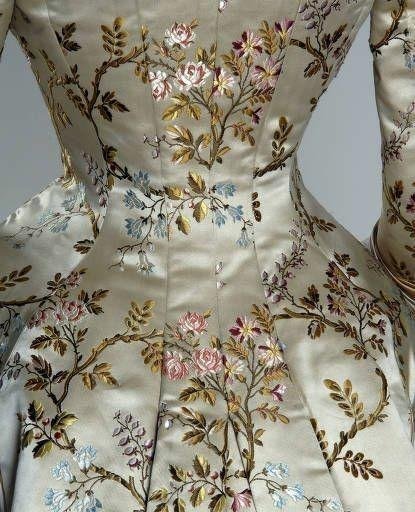

1878 Dinner dress, Silk brocade lace silk satin by Emile Pingat.
Dinner dress, 1878 (back oblique partial view). Silk brocade, lace, silk satin by Emile Pingat.
Photo by Chicago History Museum.
#1878#dinner dress#emile pingat#pingat#silk brocade#lace silk satin#la belle epoque#belle epoque splendor
66 notes
·
View notes
Text
Opéra Garnier- Style: Napoléon III
On January 5, 1875, the French president, Marshal MacMahon, formally inaugurated Charles Garnier's new opera house, which opened with a grand gala that included excerpts from several operas and a popular scene from the ballet Le Corsaire. But few were interested in the event's artistic offering. Instead, audience members eagerly anticipated the visual splendors that awaited them in the sumptuous building that would become known as the Opéra Garnier.
Early on the morning of the opera's opening night, hundreds of people gathered outside the doors, and by evening at least seven or eight thousand spectators were eagerly jammed together in the Place de l'Opéra, awaiting the glittering crowd that was about to arrive. It had been touch and go until the very last minute as to whether the building would be finished in time, and the magnificent red curtain with its gold fringe was fully installed only an hour before it was scheduled to rise. The guest list included luminaries from throughout France as well as Europe, including the Lord Mayor of London, who arrived in his gilt coach complete with sword bearer and footmen.
Without question, Paris was looking back at the Second Empire with this new opera house, but no one seemed to care. Napoleon III was long gone, and Paris was ready to be dazzled by Garnier's creation. How could it not be dazzled ? Garnier used marble of every hue, as well as acres of gilt-encrusted carvings. He then covered any remaining surfaces with paintings, glittering mosaics, and mirrors, lighting the whole fantasy with a city's worth of flickering chandeliers.
Vast and richly decorated foyers allowed audience members to stroll and mingle, but it was the Grand Staircase that was- and remains- the Opéra Garnier's special glory. Its opulent branching stairway led upward and outward to the golden foyers and the velvet-lined auditorium, but its very design was intended to serve as a stage in its own right, where lavishly dressed patrons could sweep up the broad stairs or lean on the balconies, posing to their hearts' content. Henry James was suitably impressed, even though he thought the staircase "a trifle vulgar." "If the world were ever reduced to the dominion of a single potentate," he added, "the foyer would do for his throne room."

Few on opening night probably remembered that without Baron Haussmann, there would have been no Avenue de l'Opéra, slicing its way through the business district to the opera's very door. And fewer yet probably remembered, or even cared, that the Avenue de l'Opéra was originally intended as a fast and direct route from the emperor's residence in the Tuileries Palace to the new Opéra- as a security measure following Napoleon III's narrow escape from assassination while en route to the old opera house on Rue Le Peletier.
Garnier had even designed his opera house with a private entrance built specifically for the emperor, to allow him to enter directly, without fear of dangerous encounters. But although Napoleon III never set foot here, Garnier's opera house would forever be linked with Napoleon III's golden and decadent empire. After all, when the Empress Eugénie complained to Garnier that his proposed edifice was "neither Greek nor Louis XIV nor even Louis XVI", Garnier is supposed to have replied: "Those styles have had their day. This is in the style of Napoleon III, Madame!"
The story may be apocryphal, but Garnier's answer, even if he never said it, was certainly the truth.
Mary McAuliffe - Dawn of the Belle Epoque- The Paris of Monet, Zola, Bernhardt, Eiffel, Debussy, Clemenceau and their friends.
#xix#mary mcauliffe#dawn of the belle époque#maréchal macmahon#charles garnier#napoléon iii#georges eugène haussmann#impératrice eugénie
4 notes
·
View notes
Photo

Book/ebook "Under Florence Skies" you can order it from amazon.com/author/klaraeckstein An extract from "Under Florence Skies" "...Diana Majestic, Belle Epoque, Art Nouveau, an oasis in the heart of Milan. A sublime garden in its interior, full of magnificent century-old trees. The beautiful and delicate magnolias, slightly velvety, soft scent which inspires the nostrils. The inspiration for each one to feel immersed in the joy and happiness of his presence in this stunning place. Comfortable sofas and armchairs are distributed in a way that allows everyone to feel totally relaxed in an environment of pure elegance. The spectacular scenery includes the Diana fountain, the fearless and relentless hunting goddess, radiating splendor. The pleasant freshness of the night breeze, the pendant and fragrant curls of the wisteria, the splendor of absolute happiness to the senses. It's the long awaited moment with the arrival of the couple Charlotte and Nick. Charlotte wears a beautiful Ralph Lauren dress..."
70 notes
·
View notes
Text
Romanzi Coreani o dal sapore coreano
Sull’onda del mio entusiasmo verso i drama coreani, è nata anche una mia curiosità per i romanzi coreani o ambientati in Corea, perciò ho deciso di creare una piccola lista di letture che mi hanno particolarmente incuriosito e magari potrebbero interessare anche a voi.

Storie d’amore dalla Corea del primo Novecento, a cura di Benedetta Merlini
Link: https://amzn.to/3BOa9Hw
Trama: Il filo conduttore di tutti questi racconti ambientati nella penisola coreana della prima metà del XX secolo è l'amore. L'amore visto sotto i più svariati punti di vista, amori tormentati, amori giovanili, amori non corrisposti e amori sofferti. In molte storie il sentimento lascia il posto all'erotismo più spinto, visto come espediente per sopravvivere a tutte le avversità della vita. Tutte queste passioni assumono connotazioni diverse secondo l'ambientazione della narrazione. Nelle descrizioni ambientate in città, l'amore è intenso, spregiudicato, libero dai preconcetti della società e sofisticato, perché i protagonisti sono per lo più uomini di cultura. In quelle agresti, invece, si trasforma in un'attrazione puramente fisica e sensuale, che può portare anche a commettere gesti folli, ma il cui obiettivo prioritario è sempre cercare di sopravvivere e superare tutte le traversie quotidiane.
La mia opinione: non un romanzo, ma un’antologia di racconti, non tutti sullo stesso livello sinceramente, e raccolti con un gusto da storico, più che da scrittore, forse.
La danzatrice di Seul, di Kyung Sook Shin
Link: https://amzn.to/3peWtR1
Trama: Seul, 1890. È solo una bambina orfana, Yi Jin, quando arriva come serva alla corte Joseon, ma c'è qualcosa in lei che smuove il cuore della regina. È per questo, per la sua fragilità di uccellino e la delicatezza del suo viso, che diventa oggetto di un amore quasi materno, e le viene concesso il privilegio di imparare una delle arti più amate a corte, la danza. Negli anni, Yi Jin diventa la danzatrice più apprezzata e famosa di tutta la Corea: con ogni movimento del corpo sembra in grado di compiere una magia. Quando un diplomatico francese visita la corte - sono gli ultimi, fulgidi anni della dinastia Joseon, che di lì a poco l'invasione giapponese avrebbe spazzato via - osserva rapito la magnificenza di questa cultura al culmine del suo splendore. E, vedendo Yi Jin che interpreta la Danza dell'oriolo a Primavera, resta inevitabilmente stregato: pur sapendo che le danzatrici appartengono alla corte, chiederà al re di portarla con sé in Francia e sposarla. Il permesso è accordato, e per Yi Jin comincia un viaggio incredibile: quello della prima donna coreana che abbia mai messo piede sul suolo europeo. Yi Jin conoscerà Parigi nel pieno della Belle Epoque, ma si scontrerà anche con una cultura completamente diversa, che non riuscirà mai a vedere in lei altro che un'esotica meraviglia...
La mia opinione: certamente da leggere se avete amato Memorie di una geisha, anche se è meno introspettivo e intimo rispetto a quel romanzo.
Pachinko: la moglie coreana, di Min Jin Lee
Link: https://amzn.to/3via25J
Trama: Corea, anni Trenta. Quando Sunja sale sul battello che la porta in Giappone, il suo Paese, la Corea, è colpito a morte dall'occupazione giapponese. Tradita dall'uomo che l'ha fatta innamorare e da cui aspetta un figlio, per non coprire di vergogna la locanda che dà da vivere a sua madre, Sunja lascia la sua casa, al seguito di un giovane pastore che si offre di sposarla. Ma anche il Giappone si rivelerà un tradimento: quello di un Paese dove non c'è posto per chi, come lei, viene dalla penisola occupata. Perché essere coreani nel Giappone del xx secolo è come giocare al gioco giapponese proibito, il pachinko: un azzardo, una battaglia contro forze più grandi che solo uno sfacciato, imprevedibile colpo di fortuna può ribaltare.
La mia opinione: da leggere solo se amate i romanzi corali che raccontano le storie di molti personaggi non approfondendone mai uno abbastanza, ma volendo presentare invece la storia di una famiglia come riflesso della storia di un paese. Ho molte speranze che la serie televisiva che tra poco ne è stata tratta riuscirà invece arenere più giustizia ai persoanggi che non il libro, approfondendoli di più. La trama sarebbe stupenda infatti, peccato i personaggi non siano abbastanza approfonditi.
Principessa Saranghae di Diego Galdino
Link: https://www.amazon.it/Principessa-Saranghae-Diego-Galdino/dp/8855353780
Trama: Yoo una Principessa Coreana del 1300. Giulio un ragazzo romano dei giorni nostri proprietario di uno straordinario negozio di palle di neve. Due anime destinate ad incontrarsi grazie ad una magia. La palla di neve incantata capovolge il tempo ed il destino. Così tra una carbonara preparata in un tempio buddista e una cerimonia del tè nel centro di Roma, una storia d'amore nasce a dispetto della distanza tra epoche diverse che pagina dopo pagina, sembra assottigliarsi fino a sparire del tutto, perché l'amore alla fine non cambia mai e resta sempre lo stesso dappertutto.
La mia opinione: romanzo rosa italiano contemporaneo molto leggero e molto giovanile, che però ha la trama tipica di un kdrama e racconta di una principessa coreana che dal passato arriva nella Roma del presente. Fiabesco e romanesco al tempo stesso.
1 note
·
View note
Text
Best Things to Do in Paris
New Post has been published on https://www.travelonlinetips.com/best-things-to-do-in-paris/
Best Things to Do in Paris

As the world once again becomes our playground, many of us feel compelled to enjoy the outdoors as much as possible. Here in Paris, that is a good impetus to follow, since most indoor venues now require you to show a vaccine passport in order to enter. This is true of museums, cafes, restaurants, theaters, cinemas…well, you get the picture. Lucky for us, Paris remains one of the most beautiful cities in the world. Beyond the obvious splendors of the Eiffel Tower and the Sacre-Cœur Basilica, Paris has a wealth of sites and experiences to offer.
And others, like Le Village St.-Paul, and the nearby basketball courts, the Terrain de Sport des Jardins St.-Paul, both in the Marais, make you feel like you’ve discovered a hidden nook of Paris all your own each time you stumble upon them. The Village St. Paul is recently renovated and is now an exquisite labyrinth of quaint shops, casual restaurants and bars and simply just quiet spaces where you can catch your breath underneath the shade of a tree. It was once the private gardens of King Charles V, but that was centuries ago. Likewise historical, and not to miss noticing, is the original old wall of Paris built in the 12th and 13th centuries by France’s then King, Philip Augustus. Today, it still fortifies one side of well-used open-air basketball courts of the Marais. In other words, you can both shoot hoops (or jump rope or stretch or do open-air calisthenics) while taking in one of the oldest exposed monuments of historical Paris.
The Parc Rives de Seine is another popular destination for families and sporty types, or even just people looking for a nice outdoor walk along the Seine or a place to picnic by the river. On warm spring, summer and fall evenings, you’ll find groups of friends enjoying bottles of wine or beer al fresco or ordering a beer at one of the many food stalls there.
New to the Parisian façade is La Samaritaine. Or, I should accurately denote, all things old become new again since this iconic department store in the Chatelet district of the 1st arrondissement is now fully refurbished and open again for business. It’s the LVMH group who undertook this project, which lasted for nearly a decade, and the architecture shows its modern bent. For architecture buffs and shopping enthusiasts, it’s a must-see.
In Paris, it pays to just wander because many Parisian gems and treasures can be found along a meandering path. Some of these treasures, such as the covered passage of Galerie Vivienne, are found right under your nose as you walk the city’s charming streets. Its main entrance is tucked in just behind the Palais Royal and once you enter into this covered passage, you feel yourself instantly transported through time.
One last reassurance when exploring the city: When your feet get tired of walking, there is a boat-bus service, the Batobus, that you can hop on and off. It motors you from the Eiffel Tower to just past the Ile St. Louis by riverway, and back again, if you so choose.

Getting outside these days can feel like something of a privilege. Who would have thought? But here we are. So, in honor of maximizing that privilege, these are outdoor basketball courts open to the public where you can shoot hoops and otherwise do open-air calisthenics. The kids from the high school across the street are often here playing on their sports hour, but there are many hours when there isn’t a single soul inside this expansive sports terrain. It’s a great place to bring your yoga mat and do some stretches, or a jump rope and get a vigorous workout. If you have some buddies you can shoot hoops with, go for it. The baskets are yours for the playing. While you’re here, don’t forget to notice the 12th century wall that holds up one side of the encircling façade.
Recommended for Best Attractions & Activities because: The great outdoors! Even in the heart of the Marais, you find these hidden oases where you can play, sweat and absorb some culture, too.
Paige’s expert tip: Come here for the outdoor exercise venue, stay for the history lesson… Right here on an ancient street in the Marais are these fabulous outdoor basketball courts. The playing field is large enough that if you want to do calisthenics like jump rope there’s plenty of room off to the side without getting in the way of the game. Be sure to notice the ancient wall to your right as you enter. It is one of the only remnants of the historic Paris city wall that once encircled what was then the outer limits of the city. It dates back to the end of the 12th c., beginning of the 13th c and was built by King Philip Augustus to protect against the threat of a pending Richard The Lionheart invasion.
Read more about Terrain de Sport des Jardins St-Paul →
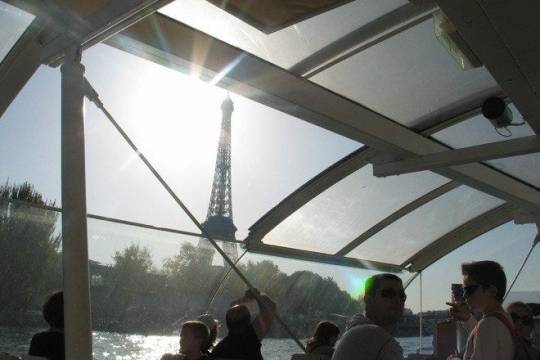
Though not strictly an attraction, the Batobus is more than just river transportation along the Seine. A hop-on, hop-off shuttle between the major Paris monuments that’s easily accessible from the Seine, it’s nice to ride the Batobus for the sheer pleasure of seeing the city from a different perspective. And while the Bateaux-Mouches and the other wonderful dinner and cocktail Seine river cruises are experiences many rave about (rightly so), this little Batobus-that-could offers the same views at a fraction of the price – dinner and cocktails not included, of course. It’s a family friendly transportation option for getting around the city. Its stops are all along the river, of course. These strategic stops are at areas which make visiting the Louvre, St.-Germain des Pres, the Marais and Latin Quarter and the Eiffel Tower/Trocadero areas very convenient by foot.
Recommended for Best Attractions & Activities because: Paris, when seen from the river Seine, is even more beautiful. And that goes for day and night.
Paige’s expert tip: Hop on and hop off all day long. Or buy the 2-day pass and make the River Seine your main method of transportation to see many of Paris’s landmark sights.
Read more about Batobus – Louvre Stop →

The area along the Rive Droite (right bank) riverfront that was once a thoroughfare for cars, stretching from the Tuileries tunnel to the Henri IV tunnel, is now a pedestrian zone. You can either start at Hôtel de Ville and head east toward the Bastille, which is a shorter walk but will take you along the stretch where the eateries are, often packed with people on the weekends. Or you can head west, still along the Seine, towards the Pont des Arts which will take you along some of Paris’ most beautiful sites such as the Conciergerie, the Pont Neuf and Île de la Cité. It’s a win-win and, either way, will leave you refreshed. An equally beautiful walk awaits you on the Left Bank side of the Seine. Optimally, start from the Pont Alexandre III and walk towards the Eiffel Tower, allowing for plenty of pauses along the way.
Recommended for Best Attractions & Activities because: These green spaces and pedestrian areas along the riverbanks are well-loved, especially by the kids. They get packed in the warmer months with fun-loving crowds.
Paige’s expert tip: After big meals and sugary treats, the best thing to do to maintain equilibrium is to take a nice long walk outdoors. Start just under the Hotel de Ville (Paris’ City Hall) where you’ll find a children’s playground, a swing set, some water fountains and the Batobus ticket kiosk. From this point, you can walk West towards the Pont des Arts, or East towards Pont Sully. Either way, you’ll encounter eateries, refreshments, shady places to sit and picnic tables. No cars, the gorgeous River Seine, and some of Paris’ most beautiful landmarks await you on this walk.
Read more about Parc Rives de Seine →
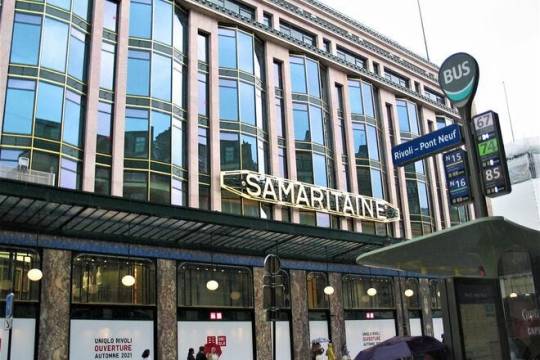
Founded originally in 1870 by Ernest Cognacq and Louise Jay (namesakes of the famous Cognacq-Jay Museum) this Parisian landmark is once again alive. Fully refurbished top-to-bottom, its entire 70,000 square meter, 10 floors of luxury goods, French culinary treats, artistic installations and beauty day-escapes are now all yours for the taking. One of the façades, the most modern one, fronts onto the rue de Rivoli, giving this little Pont-Neuf neighborhood of Paris the sleek LVMH imprint. But other parts of the building were maintained to preserve its Belle Epoque appeal. The building takes up a whole city block and then some. There is also the Cheval Blanc hotel that is adjacent to this department store (also LVMH owned). This department store is well-equipped to deliver whatever you might need for person or home. Clean-lined furnishings are for sale, along with china, kitchen appliances, and bedding. Men’s and women’s fashions guarantee something stylish to wear, and cosmetics let you put your best face forward. Sportswear, a bookstore, a pet department, and children’s clothing, toys, and accessories are available as well. METRO: Pont Neuf
Recommended for Best Attractions & Activities because: Beauty day-escapes, including one devoted solely to reshaping your eyebrows, gourmet cafes and, of course, luxury shopping are all here. Paris at its finest!
Paige’s expert tip: This is Le Shopping destination now in Paris. Closed in 2005 as a safety hazard, Parisians have waited over a decade to be able to once again frequent this Belle Epoque, beloved department store. And LVMH, the new owner and instigator of the renovations, certainly has delivered. The splendor of the interior is barely grasped by its exterior, so, by all means, go inside and enjoy!
Read more about La Samaritaine →

The Sacré-Coeur Basilica, also known as the Basilica of the Sacred Heart, is blessed with its location in Paris. At the top of a huge hill in Montmartre overlooking the city, large steps cascade down the hill on one side, the basilica’s white domes looming up in magnificence behind them. Head inside the Sacré-Coeur to experience this sacred Catholic cathedral, built in 1876. With its high point at the top of the Montmartre hill, plus its gleaming white stone exterior, Sacré-Coeur Basilica is an amazing sight to behold from a distance as well, and views of it can be seen from many different points in Paris.
Recommended for Best Attractions & Activities because: The Sacré-Coeur sits like a majestic white lady, regal and pure, at the top of the Montmartre Hill, otherwise called the Butte Montmartre.
Paige’s expert tip: The steps are great for sitting on with a loved one or friends. Music performers are often playing and you’ll have an impressive view of the city spreading out below.
Read more about Basilique du Sacré-Coeur →
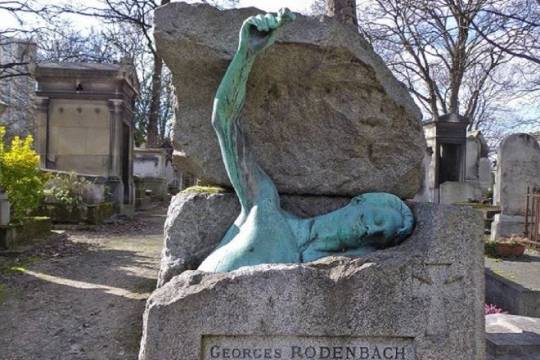
Named for Louis XIV’s confessor, who once lived in the vicinity, this cemetery was established in 1804. It was planned as a repository for human remains when authorities sought to improve sanitation by moving graves from the center of the city to its outskirts. Now park-like in its appeal, Pére Lachaise is a much-desired place to be buried. Within its bounds are the graves of Moliére, Oscar Wilde, Heloise & Abelard, Jim Morrison, Frédéric Chopin, Edith Piaf, Sarah Bernhardt, Marcel Proust and other famous figures. Stately trees and beautiful memorials add to the cemetery’s present-day calm. The area surrounding the cemetery is also something of a budding bohemia. Many young families have flocked to the 20th arrondissement in recent years for its wider streets and bigger, more affordable apartments.
Recommended for Best Attractions & Activities because: Can you really come all the way to Paris and not pay tribute to Jim Morrison’s grave?
Paige’s expert tip: Schedule a whole day if you want to explore the entire cemetery. There are a whole 110 acres to cover and many famous tombstones to hunt down, in addition to Jim Morrison’s and Oscar Wilde’s.
Read more about Cimetiére du Pére Lachaise →
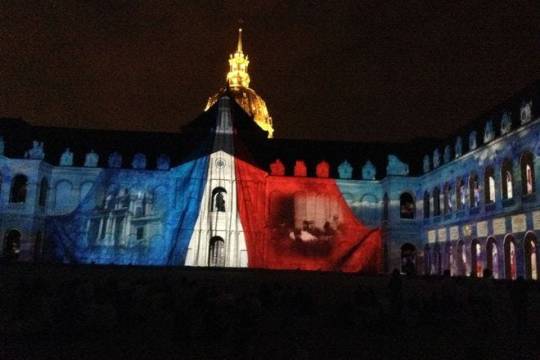
This gorgeous architectural gem, completed in the 17th century, is located in the city’s Faubourg Saint-Germain region. It was created by Louis XIV, the Sun King, as a home for aged soldiers and disabled/injured veterans. Among its prominent features are a sweeping esplanade, a series of gardens, and a striking domed church, where Napoleon I and other military heroes are interred. One of those military heroes is Turenne, one of the most famous marshals of France, whose tomb was installed in 1800 under the Dome. It wasn’t until 1840 that Napoleon I’s body was transferred to this site under the direction of King Louis-Philippe. Also at this location is the Musée de l’Armée: an outstanding art and military history museum, with extensive armament collections.
Recommended for Best Attractions & Activities because: Emperor Napoleon Bonaparte’s body was interred in the tomb at Hôtel National des Invalides in 1840.
Paige’s expert tip: In the summer months, catch the evening light and sound show. It’s an exhilarating romp through Paris history from the perspective of battles fought and wars won.
Read more about Hôtel National des Invalides →

This Roman-style arena was built between the first and the 2nd century A.D. Named after the city when it was still under the Gallo-Roman rule, the Arènes de Lutèce are one of only two monuments that are still standing from that early historic time of the city, nearly 2,000 years ago. It had been completely covered over and only in 1883, after the demolition of the Daughters of Jesus Christ Convent, was a third of the amphitheater uncovered. Today, you can still see the stage and wings where the actors stood when performing in front of the assembled crowd. It’s a huge monument but not seen from the street. So you literally have to go and unearth it yourself by following the little street that leads to the entrance. It’s a breathtaking venue. It’s also very close to rue Mouffetard, so plenty of fun cafes, bars and restaurants nearby!
Recommended for Best Attractions & Activities because: This arena dates back to the early Roman times when Paris was called Lutèce.
Paige’s expert tip: This amphitheater, originally used as a stage, was later a cemetery. It was later filled in following the building of the wall of Philippe Auguste in 1210. Les Arenes were rediscovered between 1860-1869 when the Compagnie Generale des Omnibus sought to build a tram stop on the site.
Read more about Arènes de Lutèce →
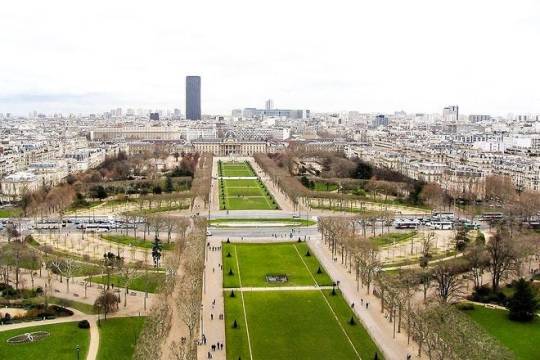
First built in 1780, the Parc du Champ-de-Mars is a large green space that stretches from the Eiffel Tower all the way down to the École Militaire to the southeast. It is a favored place for leisurely strolls, rain or shine. It is also one of the best places in the city to stretch out a picnic blanket and while the afternoon hours away over a shared baguette, some French cheese and other treats. Now that there is a glass protective shield around the bottom of the Eiffel Tower, approaching from the great monument from the Champ de Mars affords you a magnificent perspective onto the Iron Lady. Here, you can still lay out a blanket and picnic goodies and simply enjoy some time spent in the shadow of a one-of-a-kind view.
Recommended for Best Attractions & Activities because: The Eiffel Tower is among the ten most recognized landmarks in the world.
Paige’s expert tip: The Champ de Mars is the favored spot for picnics and afternoons spent with a book stretched out on a blanket under the sunshine and the Eiffel Tower. It is open both day and night, so star-gazing is also a popular pastime here.
Read more about Champ de Mars →
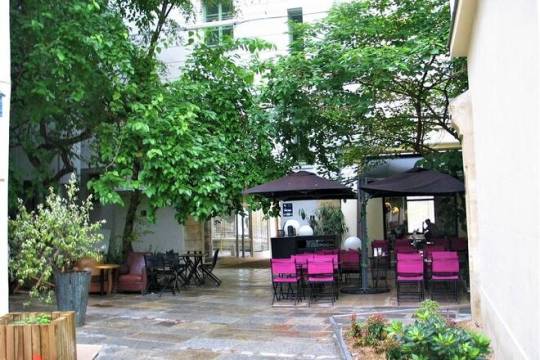
Fresh from a complete refurbish, this little village within the heart of the Marais district of Paris is now fully re-opened for business, browsing, antiquing and simply enjoying peace & quiet within secluded, interconnected courtyards. Collectors of art and antiques will know this little village well, as many of the shops are oriented towards antiques and other fine collectibles. But not all. Other shops include Venus sur Cour, a shop specializing in erotic collectibles. The network of interconnected courtyards also houses many artist ateliers including photographers, ceramic workshops and even a hatmaker. Le Village St. Paul, now that it is once again fully open and in pristine condition, is also a very popular spot with the locals for lunch/dinner. Restaurants range from casual Italian to casual French to a bar aptly called Dad’s Den. As you meander it’s easy to imagine that King Charles V himself once walked here.
Recommended for Best Attractions & Activities because: The City of Paris spent heaps of Euros and several years refurbishing these ancient gardens once owned by King Charles V. They are now re-opened.
Paige’s expert tip: Once upon a time this was the private gardens of King Charles V.Today, it is known as Le Village St. Paul. A labyrinth of interconnected courtyards filled with quaint shops, artists’ ateliers and restaurants/bars, few places in the Marais offer such a charming oasis from the hustle and bustle of the main streets as Le Village St. Paul.
Read more about Le Village St Paul →
Source link
1 note
·
View note
Photo






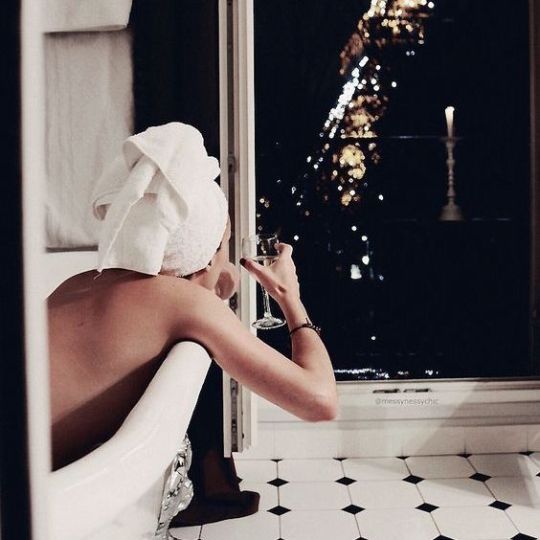


About Minah’s family...
CAROLINE MADELEINE DELACROIX MONTPENSIER, 43 || THE AUNT || CEO of Delacroix Corporations
“Being powerful is like being a lady.
If you have to tell people you are, you aren't.”
DATE OF BIRTH: May 13
PLACE OF BIRTH: Paris, France
NATIONALITY: French
BLOOD STATUS: Pureblood
FACE CLAIM: Melanie Laurent
TRADEMARK: Icy blond hair, perfect skin, demure composure, and sophisticated style. Is known for gracing social events wearing either power suits or evening gowns that always flatter her statuesque figure.
FAMILY BACKGROUND The House of Delacroix is an ancient noble family in France. One of the most powerful dynasties in Europe today, the family dates back to Jeanne Louise de Bourbon, Marquise de Montespan, a legitimized daughter of Louis XIV, le Roi Soleil, who ruled over France between 1642 and 1715. Jeanne Louise was given the title of Duchess of Bourbon and Princess of Condé upon marrying a distant cousin of King Louis I of Spain, who later on founded the House of Delacroix, taking the name from his nobiliary title of Duc de Delacroix. Over several centuries the Delacroixs have maintained complex ties with Spanish and German royalty, but never fond of attention they kept themselves distanced from the spotlight during the post-revolution era. During la Belle Epoque, however, as Paris recovered from the horrors of the Siege and The Commune, the Delacroix settled back in the City of the Lights after a long exile in the Provence. Along with the ópera, the prose of Marcel Proust and the paintings of Picasso, a new Empire was born under the command of the visionary Jacques Luc du Delacroix who became a pioneer in the modern French textile industry and founded a major clothing and apparel company that managed survived the Nazi occupation.
Fast forward to the present and according to the New York Ghost, The Delacroix Family is currently the wealthiest wizarding family of France. Besides inheriting large amounts of gold and state from the older generations, the family has amassed a big fortune with a revamped fashion business that has become one of the biggest emporiums of luxury clothing in the world. Likewise, and unlike most wizards, the Delacroix Family has also ventured into the muggle world where they have built a huge conglomerate that runs a business in different fields, ranging from energy suppliers to fashion. The members of the Delacroix family are notorious in their own fields without exception. From politicians to artists, they all have succeeded, becoming recognized names in both worlds. Nevertheless, the Delacroix remain slightly hermetic in regards to keeping a pureblood line and their traditions as wizards. They might appear open-minded and unconventional, but they’re rather conservative and elitist.
FAMILY AFFILIATIONS The Delacroix are direct descendants of the French, German and Spanish nobility. The patriarch of the family, Louis Pierre Philippe Delacroix has particularly been linked to Le Roi Soleil (Louis XIV) and the House of Bourbon, being a descendant of King Louis XIV of France (ruled 1643-1715) through his daughter Jeanne Louise de Bourbon. In the most recent generations, the family has also been linked to the Spanish nobility through the Infanta María Inés de Galicia, who's Louis great-grandmother, as well as German nobility through Louis’ wife, Madame Laetitia Montpensier, the daughter of the German Countess Marie Louise Larisch von Moennich.
The Delacroix House also maintains strong ties with Beauxbatons Academy of Magic, where Louis Pierre was headmaster for few years and currently serves as one of the 12 members of the Beauxbatons Board of Governors. They're also linked to the French Ministry of Magic, the French Wizarding High Court of Law and Parliament and the Academie Française des Sorciers (French Academy of Wizards), where the family has been appointed important positions throughout the last decades. In the muggle realm, they're related to the French Government as Louis Pierre Philippe’s brother has served as Prime Minister and other important political positions during the Fifth Republic and with other members of the family playing key roles as high profile politicians.
SOCIOECONOMIC STATUS: Like previously stated, The Delacroix family is a powerhouse in both the Muggle and Wizarding Worlds. The Delacroixs are listed among the richest households in Europe and according to the New York Ghost, they’re the unrivaled richest Wizarding family of France.
QUICK BIO The eldest daughter of Louis Pierre Philippe Delacroix and Madame Laetitia Montpensier, Caroline was born and raised in the heart of Paris and was educated in both the muggle and the magical world. She grew up in an almost private world of unimaginable splendor and security, always encouraged by her parents to excel and become a role model to her younger siblings. From a young age, Caroline possessed great confidence, impressing her family and notable members of French high society, who noted her poise and competence when she started to host fancy soirées with only 17 years of age.
Like many other women of her class, Caroline patronised a great number of charities during her twenties. Upon having access to her fortune, one of her first acts was to found an education foundation in honor of her father. However, her main causes have always been connected to the assistance and welfare of women. She was president of the French Young Women Association, a charity which sponsored college education for young women in need. Nowadays Caroline has stepped as CEO of her family’s conglomerate. A passionate and perfectionist woman to the bone, she usually plays the role of the disciplinarian among her siblings, although contradictorily enough she also happens to be the kindest and best natured of them all. She is that one person who always takes the lead during troubling times and fixes problems for every member of her family, for what she is considered to be the future matriarch of the Delacroix House. LOVE LIFE: Caroline has been romantically involved with a number of prominent men, including Paul-Henri Jeseaux (a Prime Minister of Belgium), film director Marcus Huston, British diplomat Carl Shaughnessy, French-Russian heir Andrei Levesque Pavlovitch and painter James Harris. However, following the Delacroix women tradition, Caroline’s relationships have been short-lived and rather disastrous, which is probably why she’s focus on her family business instead, conducting a strategic restructuring and modernisation of the Group during the last years.
MOST LIKELY TO BE FOUND: When not at work, probably plotting a fashion takeover with a glass of champagne in hand or chilling home and enjoying her favorite wizarding show The High Society, which has been said to be inspired by the European wizarding elite, (herself included).
RELATIONSHIP TO MINAH: As Minah grew up, Caroline was usually the one handling her day-to-day raising. Despite being a busy woman, Aunt Caroline played an important role in Minah’s education and would usually take her to business meetings and around high society parties although MInah was nothing but a child. Nowadays, Caroline is that one aunt who always knows best; offers the best-unsolicited advice at the right moments, and still drags Minah around the fanciest parties of the Wizarding World. OTHER FACTS - Lives to slay power suits. - is to blame for Minah’s obsession with baths and champagne. - Will probably never marry because she expects perfection from everybody and so far all her past relationships have ended in disaster. - Has been picked as the most influential woman in fashion for three years in a row by Forbes.
1 note
·
View note
Photo
while we love to watch shows and movies eschewing the Age of Enlightenment and the Belle Epoque, what most of us fail to realize is that most of us wouldn't have lived in the beautifully gilded homes of splendor, that was reserved for the 2-3%. Even Middle Class only made up 13-20% of the population ... Which leaved the rest of us, 85% of us, that would've been living just like this. Juat like these photos show. Struggling. Hand to mouth. In dirt and squalor. Victims of horrific economic and social oppression, trapped by their Class and Status.
No electricity, no antibiotics, no refrigerators, no soda, no snacks, no comfort foods, no phones, no cars, no subways or buses ... Its hard to even imagine the actual reality of life in the 18th&19th century


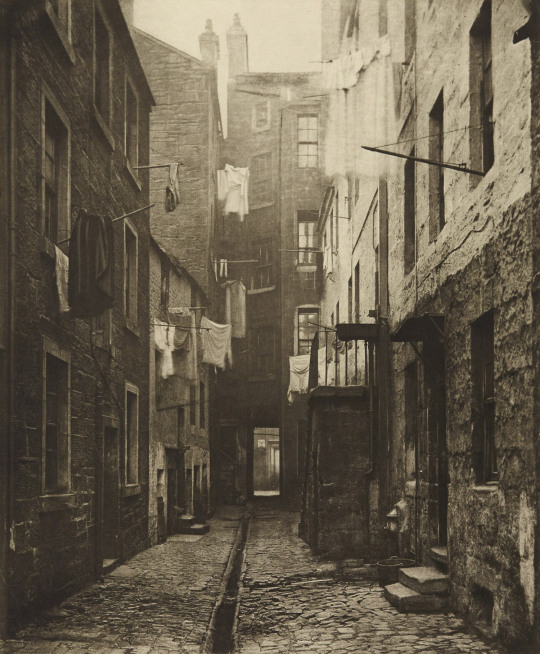
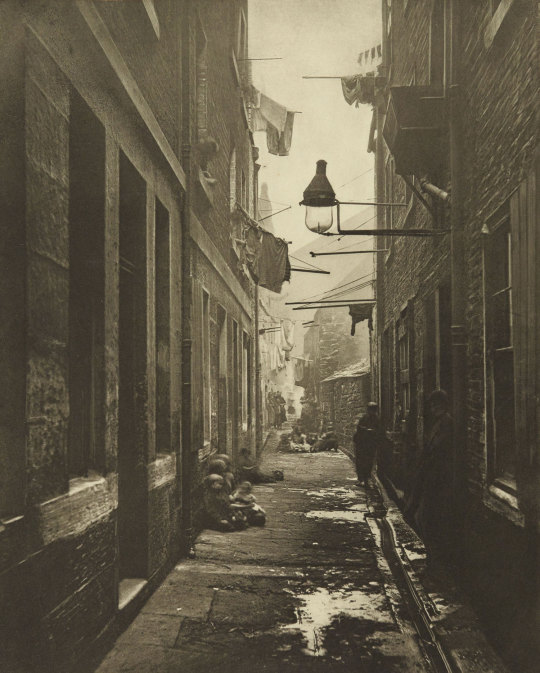
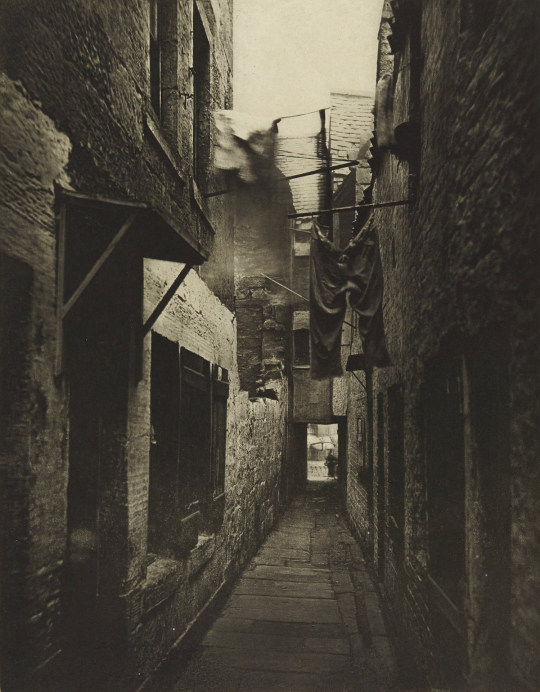
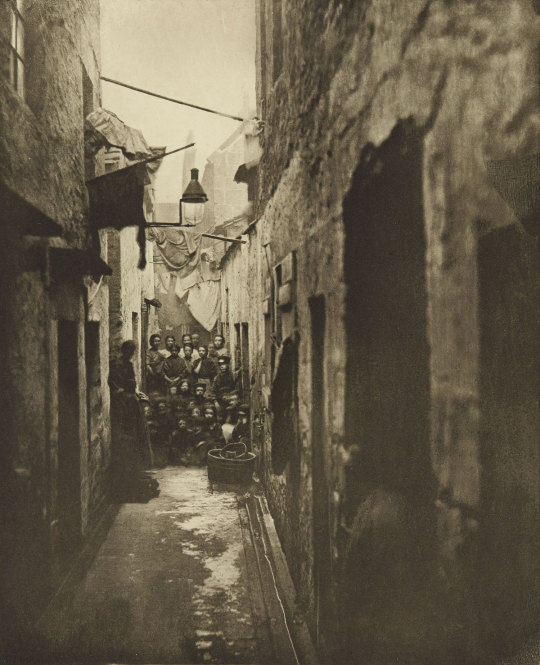
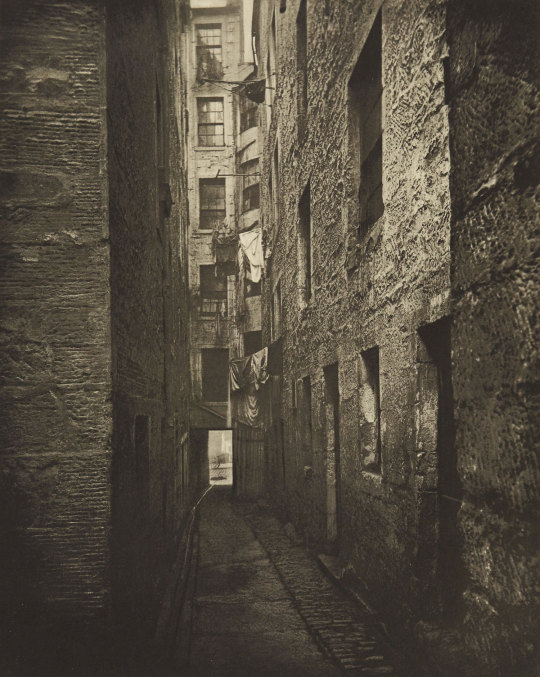

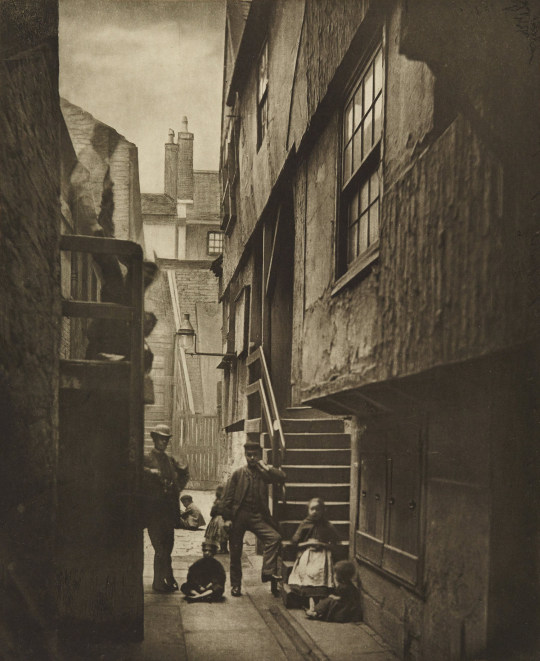
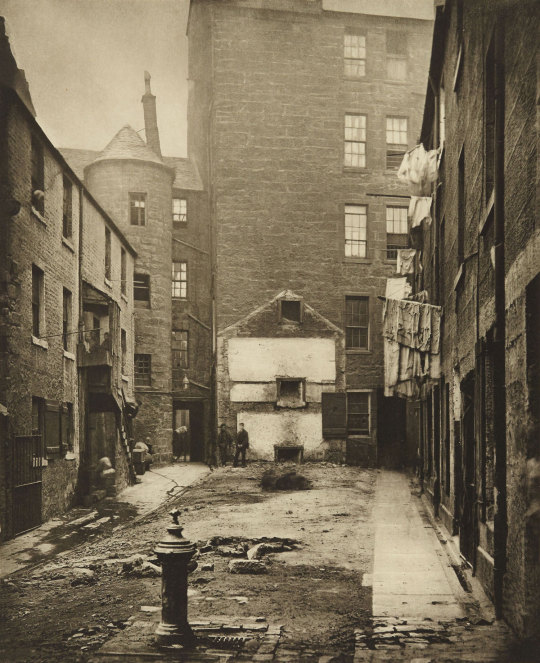
The Old Closes and Streets of Glasgow, 1868
Photography by Thomas Annan
#glasgow#19th century#thomas annan#photography#scotland#poverty#great britain#vintage uk#vintage glasgow#vintage Scotland#sepia#moody
582 notes
·
View notes
Photo

DELIGHTFUL DINARD
The Royal Emeraude Dinard - MGallery by Sofitel is a charming hotel situated in the heart of Dinard, a legendary seaside resort since the Roaring Twenties. Just a short walk from the casino and the famous Écluse beach, relive the splendor of the Belle Epoque during your stay and enjoy a swim in the sea or a moonlit walk. This charming hotel has been entirely renovated and is fully air conditioned, welcoming you in a relaxing and comfortable setting that has been inspired by travel.
#dinard#france#luxury#luxury hotel#luxury holiday#luxury travel#luxury vacation#europe#europe all#europe destination
4 notes
·
View notes
Text
episode 4
Jorge Ben Jor – Mais Que Nada – Single
Joao Gilberto, Stan Getz, Astrud Gilberto – Girl from Ipanema – Getz/Gilberto
Joao Gilberto, Stan Getz, Astrud Gilberto – Corcovado – Getz/Gilberto
Os Originais Do Samba – Enlouqueci – Os Originais Do Samba
Maria Bethania, Gilberto Gil, Caetano Veloso – Saudade Dela – Encanteria
Maria Bethania – Samba de Bencao – Que Falta Voce Me Faz
Martinho da Villa – Aquarela Brasileira – Maravilha de Cenario
Joao Bosco – O Bebado e a Equilibrista – Linha de Passe
Gillian Hills – Zou Bisou Bisou – Twistin’The Rock Vol 9
Eartha Kitt – C’est Si Bon – That Bad Eartha
Ria Bartok – Tu te moques de moi – La Belle Epoque
Joe Dassin – Les Champs-Elysees – Les Champs-Elysees
Francoise Hardy – Suzanne – Comment te dire adieu?
Francais Lemarque – Marjolaine – Les Grande Chansons
Serge Gainsbourg, Jane Birkin – Je t’aime moi non plus – Jane Birkin/Serge Gainsbourg
Brigitte Bardot, Serge Gainsbourg – Bonnie and Clyde – Bubble Gum
Samba de Raiz – Coracao Em Desalinho – Ao Vivo Vol. 3
Carla Bruni – Quelqu’un M’a Dit - Quelqu’un M’a Dit
Pink Martini – Ou Est Ma Tete? – Splendor in the Grass
Bezerra de Silva – Malandragem da um Tempo – Alo Malandragem Maloca o Flagrante
Clara Nunes – O Mar Serenou – Nues Momentos: Clara Nunes
Santoros – Ancestros – Ancestros
Las Cafeteras – La Bamba Rebelde – It’s Time
Chicano Batman – Stoned Soul Picnic – Cycles of Existential Rhyme
Kalis Uchis – Lottery – Por Vida
Thee Commons – Alitas – Single*
La Santa Cecilia – Ingrata – Amar y Vivir
Club des Beludas – The Road is Lonesome – Swop
0 notes
Photo

Portrait by Art Nouveau Painter Fernand Toussaint (Belgian, 1873-1963), Elegantly Waiting.
For this artist it was equally easy painting in all categories, from landscapes and seascapes to beautiful bouquets and still lifes, but in his intimate portrait and genre paintings we find, in the words of Mario de Monci, Toussaint as "the undisputed master of the grace and charm of a woman." ... (x)
#art#painting#portrait#Fernand Toussaint#belgian art#belle epoque#belle epoque splendor#Elegantly Waiting#toussaint#art nouveau#art nouveau painter#la belle epoque#beautiful dress#white#white dress#white dresses#belgium#art nouveau in belgium
44 notes
·
View notes
Text
Nella Venezia di Corto Maltese
Un itinerario nella Venezia di Corto Maltese, un viaggio per calli e corti nascoste alla scoperta di luoghi poco visitati e spesso poco conosciuti dagli stessi veneziani. Una passeggiata in zone incontaminate che, per la loro lontananza dalle orde di turisti e per la loro semplice, ma struggente bellezza, sprigionano un che di misterioso e riportano il visitatore in una Venezia ormai lontana.
Zone silenziose, in cui tutto trasuda di storia, quella storia che ha contraddistinto Venezia nei secoli e che spesso dimentichiamo o fingiamo di dimenticare. Luoghi che sembrano non conoscere quell' accanimento che sta snaturando e svendendo la città. Venezia non è solo Piazza San Marco e Rialto, dimentichiamoci la Venezia stereotipata da cartolina perché l’anima di Venezia la si ritrova soprattutto in queste zone nascoste, appartate e cariche di significato.
Il nostro itinerario si propone esattamente l’obiettivo di farvi scoprire alcuni di questi posti magici, le “corti sconte” in cui Hugo Pratt ambientò alcuni episodi di Corto Maltese. Non preoccupatevi di seguire alla lettera le nostre indicazioni, Venezia è piena di corti sconte che è piacevole scoprire per caso, mentre si vaga tra calli e campielli senza una meta precisa lasciandosi guidare dall’istinto.
1 tappa (½ ora) Il punto di partenza di questo itinerario è l’Arsenale di Venezia, l’antico cantiere della Serenissima, che all’epoca del suo massimo splendore era uno dei maggiori d’Europa. Il nome Arsenale deriva dalla parola araba “darsin’a” (luogo dove si costruiscono le navi) e fu fondato intorno al 1104, al tempo del doge Ordelafo Falier. In questa piccola città autonoma gli oltre 5.000 operai che vi lavoravano, gli Arsenalotti, riuscivano a varare anche due navi al giorno! Intorno a questo enorme cantiere sorgevano le abitazioni dei marinai ed è per questo che qui si poteva incontrare gente di tutte le provenienze: armeni, greci, turchi, arabi, insomma un enorme crogiolo di culture e religioni. Ora la zona è molto tranquilla ed è l’ideale per chi desidera staccare un po’ la spina e restare tranquillo nel silenzio di Venezia. L’ingresso di questo maestoso edificio, situato nel capo omonimo, è dominato dai leoni, il simbolo di Venezia: un leone alato è posto sopra all’arco d’ingresso, mentre al di fuori del cancello sono allineati 4 leoni di diverse grandezze. Il leone più grande, che si trova sulla sinistra, era un tempo a guardia dell’ingresso del porto di Atene e venne portato a Venezia nel 1692 da Francesco Morosini come trofeo di guerra. E’ proprio questo leone che Corto Maltese osserva in uno dei fumetti di Hugo Pratt. Sul muro di cinta, a destra del portale, un busto raffigurante Dante Alighieri ricorda la visita del poeta a Venezia avvenuta nel 1321.
2 tappa (½ ora) Proseguiamo il nostro viaggio per le corti sconte addentrandoci nelle calli in direzione di Campo SS. Giovanni e Paolo. La nostra prossima meta si trova infatti nelle vicinanze di Barbaria de le Tole, una calle il cui nome ci ricorda che qui si trovavano i magazzini del legname (le “tole” in veneziano sono le tavole). Giunti più o meno a metà strada imboccate Calle Muazzo e proseguite fino alla Corte Muazzo dove vi troverete sovrastati da alcune tra le case più alte della città, una sorta di grattacieli veneziani. L’imponente complesso edilizio dei primi del Seicento, appartenuto alla nobile famiglia Muazzo, di origine torcellana, si componeva di un piano terra, di un mezzanino, di due piani nobili sovrapposti e di un mezzanino sottotetto. L’edificio, oggi condominio, si affaccia sul rio di San Giovanni Laterano con due eleganti prospetti, ma gli affacci visibili dalla corte sono poveri e dimessi in contrasto con le grandiose facciate. Nella corte è però presente un bellissimo capitello bizantino dell’XI secolo rappresentante figure zoomorfe e foglie d’acanto.
3 tappa (1 ora) Terminata la nostra visita alla Corte Muazzo possiamo approfittare dell'occasione per visitare la Chiesa dei SS.Giovanni e Paolo che si trova nelle vicinanze. Torniamo quindi in Barbaria de le Tole e percorriamola tutta fino al campo. Poco prima, sulla destra noterete la Chiesa di Santa Maria dei Derelitti o dell'Ospedaletto (di fronte alla chiesa si trova la Librerie Française). Giunti in campo SS.Giovanni e Paolo, alla vostra sinistra scorgerete una corte sopraelevata, Corte Veniera, mentre alla destra potrete ammirare lo splendido esempio di gotico veneziano della chiesa omonima, una delle chiese più grandi di Venezia. Al suo fianco sorge la Scuola Grande di San Marco, oggi Ospedale della città, di fronte alla quale spicca la statua equestre di Bartolomeo Colleoni. A cinque minuti da qui, nel piccolo Campo dei Miracoli, potrete ammirare uno splendido gioiello del primo Rinascimento veneziano, l'isolata chiesa di Santa Maria dei Miracoli. Non è sempre facile trovarla aperta, ma vale la pena provare a passare da quelle parti anche solo per osservare la splendida facciata a marmi policromi.
4 tappa (½ ora) L’itinerario continua verso un’altra famosa corte, la Corte Botera, meglio conosciuta come Corte Sconta detta Arcana, da dove inizia l’avventura cinese e siberiana di Corto Maltese. Per giungere in questo angolo misterioso di Venezia dirigetevi verso Calle Lunga Santa Maria Formosa. Se ne avete occasione, approfittate per fare una visitina alla libreria Acqua Alta, una libreria davvero speciale, un luogo incantato dove potrete intraprendere una caccia al tesoro alla ricerca del libro che vi si addice tra le miriadi di volumi ammassati in gondole, barche e vasche da bagno. Sarete accolti calorosamente dal simpatico proprietario e dai suoi numerosi gatti che spesso troverete sonnecchiare sopra i libri. Terminata l’incursione nella libreria più caratteristica di Venezia possiamo proseguire per Calle Lunga Santa Maria Formosa e svoltare a destra in Calle Trevisana Cicogna. Arrivati sul ponte fermatevi ad osservare a destra: noterete un singolare palazzo che si trova in mezzo a due rii e che quindi si affaccia su entrambi i canali. Da qui avviatevi verso il ponte di ferro che vi condurrà verso la nostra meta: la Corte Sconta. Purtroppo si tratta di una corte privata, quindi difficilmente visitabile se non avete la fortuna di farvi aprire da qualcuno che lì ci abita. Come diceva Hugo Pratt, le cancellate che sbarrano la strada cancellano la possibilità di ritrovare importanti memorie e ci precludono la possibilità di ammirare e apprezzare questi angoli della città. Vi auguriamo quindi di aver la possibilità di entrarci e di sbirciare dentro.
5 tappa (15 minuti) Altra tappa del nostro viaggio è Corte del Milion, dove aveva casa un personaggio che di viaggi se ne intendeva veramente: Marco Polo (il nome della corte ci ricorda infatti Il Milione, l’opera che Polo scrisse in prigione insieme a Rustichello da Pisa). In realtà le corti sono due, Corte Prima e Seconda del Milion, e si trovano tra Campo Santa Marina e San Giovanni Grisostomo. Venendo da Santa Marina la prima che si raggiunge è Corte Seconda del Milion dove ha sede il Teatro Malibran. Poi, superato un basso sottoportico, si giunge nell’altra corte, molto più piccola, dove si trova il locale omonimo.
6 tappa (½ ora) Penultima meta della nostra passeggiata per gli angoli nascosti di Venezia è Corte Maltese, ora Corte Contarini del Bovolo, una zona veramente nascosta della città, situata nelle vicinanze di Campo Manin. A differenza di come molti di voi avranno pensato, il nome della Corte non deriva dal famoso personaggio Prattiano, bensì era il nome che Arnoldo Marseille diede a Palazzo Contarini quando agli inizi dell’800 lo trasformò in un albergo. Appena entrati in questa Corte rimarrete affascinati dalla splendida scala a chiocciola (in veneziano “bovolo”) che si aggancia alla bella facciata a loggiati sovrapposti del palazzo. Di aspetto rinascimentale e con qualche influenza bizantina, la scala del Bovolo fu realizzata intorno al 1499 da Giovanni Candi. Lo scrittore veneziano Renato Pestriniero dedicò a questo gioiello architettonico il racconto Nodi, pubblicato nel 1981 di cui citiamo alcuni passaggi: “avevamo lasciato Campo Manin per inoltrarci nell’unico accesso alla corte, una fessura in ombra tra cataste di case antiche, occhiaie nere, bocche di cantine putrescenti, muri di mattoni corrosi dalla salsedine. E alla fine ecco la corte piccola e raccolta, un pozzo formato da pareti di case sovrapposte, protuberanze, anfratti, un labirinto di volumi incastrati uno nell’altro nel corso dei secoli. La scala sorge lì. E’ una spirale di gradini che si avvolge all’esterno di una torre cilindrica, un nastro orlato di trine marmoree, un capriccio architettonico.” Dalla sommità si gode di una splendida e inconsueta vista di tetti, camini e campanili della città, come se vi trovaste sopra una suggestiva e signorile altana veneziana.
7 tappa (1 ora) Concludiamo il nostro itinerario visitando la corte interna di Palazzo Fortuny, in Campo San Beneto, che fu abitazione, studio e laboratorio di Mariano Fortuny y Madrazo. Oggi il palazzo è sede del museo che ha ricreato l’abitazione dell’eclettico artista con le sue tappezzerie, i quadri e i mobili, permettendo ai visitatori di respirare quell’atmosfera tipica della Belle Epoque. Se deciderete di entrarci rimarrete sorpresi dalla piccola corte interna, uno spazio intimo, circondato dalle antiche mura del palazzo, una vera oasi di pace. Proprio qui a Palazzo Fortuny, nel 2006, si è tenuta una mostra dedicata a Hugo Pratt e intitolata Libri, sogni, viaggi. Il ritorno di Hugo. Una mostra documentaria che, a dieci anni dalla morte di Hugo Eugenio Pratt, ha reso omaggio alla creatività e alla fantasia dell'artista che a Venezia ha dedicato molte delle sue strisce e dove ha ambientato molte delle storie che vedono protagonista il suo celebre alter ego, Corto Maltese.
0 notes
Text
Paris's Opéra Comique, Lavishly Restored, Is Becoming One Of The City's Hot Tickets
The ornate Belle Epoque theatre had lost its luster, visually and artistically, by the end of the last century. But the house's director, Olivier Mantei, is determined to bring excitement and audiences back. So he's overseen a meticulous restoration of the building to its original splendor, reopened it with a spectacular revival of a grand opera not seen in Paris for 246 years, and even commissioned a patisserie to create a new cake for the occasion.
Article source here:Arts Journal
0 notes
Photo

Book/ebook "Under Florence Skies" you can order it from amazon.com/author/klaraeckstein An extract from "Under Florence Skies" "...Diana Majestic, Belle Epoque, Art Nouveau, an oasis in the heart of Milan. A sublime garden in its interior, full of magnificent century-old trees. The beautiful and delicate magnolias, slightly velvety, soft scent which inspires the nostrils. The inspiration for each one to feel immersed in the joy and happiness of his presence in this stunning place. Comfortable sofas and armchairs are distributed in a way that allows everyone to feel totally relaxed in an environment of pure elegance. The spectacular scenery includes the Diana fountain, the fearless and relentless hunting goddess, radiating splendor. The pleasant freshness of the night breeze, the pendant and fragrant curls of the wisteria, the splendor of absolute happiness to the senses. It's the long awaited moment with the arrival of the couple Charlotte and Nick. Charlotte wears a beautiful Ralph Lauren dress..."
26 notes
·
View notes
Photo

Book/ebook "Under Florence Skies" you can order it from amazon.com/author/klaraeckstein An extract from "Under Florence Skies" "...Diana Majestic, Belle Epoque, Art Nouveau, an oasis in the heart of Milan. A sublime garden in its interior, full of magnificent century-old trees. The beautiful and delicate magnolias, slightly velvety, soft scent which inspires the nostrils. The inspiration for each one to feel immersed in the joy and happiness of his presence in this stunning place. Comfortable sofas and armchairs are distributed in a way that allows everyone to feel totally relaxed in an environment of pure elegance. The spectacular scenery includes the Diana fountain, the fearless and relentless hunting goddess, radiating splendor. The pleasant freshness of the night breeze, the pendant and fragrant curls of the wisteria, the splendor of absolute happiness to the senses. It's the long awaited moment with the arrival of the couple Charlotte and Nick. Charlotte wears a beautiful Ralph Lauren dress..."
14 notes
·
View notes
Photo


Book/ebook "Under Florence Skies" you can order it from amazon.com/author/klaraeckstein An extract from "Under Florence Skies" "...Diana Majestic, Belle Epoque, Art Nouveau, an oasis in the heart of Milan. A sublime garden in its interior, full of magnificent century-old trees. The beautiful and delicate magnolias, slightly velvety, soft scent which inspires the nostrils. The inspiration for each one to feel immersed in the joy and happiness of his presence in this stunning place. Comfortable sofas and armchairs are distributed in a way that allows everyone to feel totally relaxed in an environment of pure elegance. The spectacular scenery includes the Diana fountain, the fearless and relentless hunting goddess, radiating splendor. The pleasant freshness of the night breeze, the pendant and fragrant curls of the wisteria, the splendor of absolute happiness to the senses. It's the long awaited moment with the arrival of the couple Charlotte and Nick. Charlotte wears a beautiful Ralph Lauren dress..."
4 notes
·
View notes